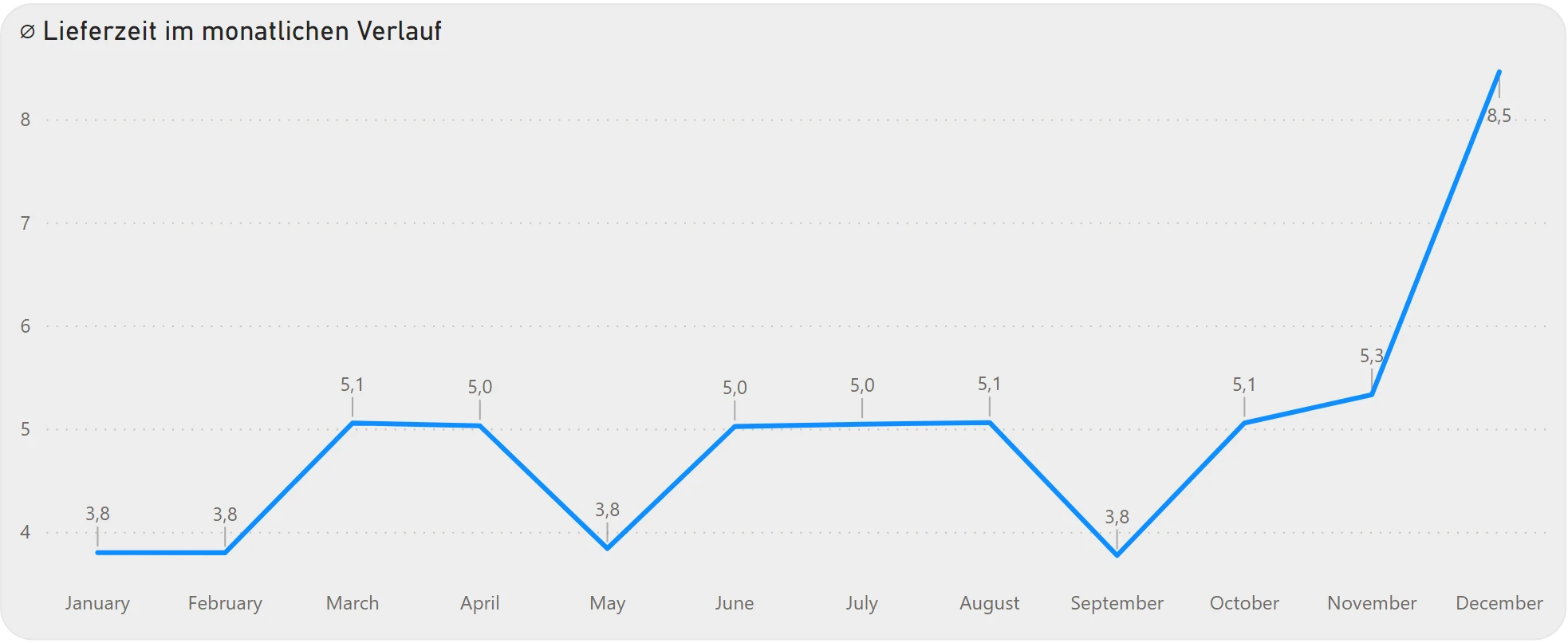Power BI: Calculate number of days

Master the time in Power BI - effectively calculate and visualize the number of days
How do I use the powerful date and time functions in Power BI effectively? We answer this question and take you through a detailed step-by-step guide to calculating the number of days between two dates. We'll show you how to visualize the results in meaningful project management reports. A guide for anyone who wants to expand their skills in Power BI and gain deeper insights into their data.
Introduction to date and time functions in DAX
Date and time functions, realized by DAX (Data Analysis Expressions) in Power BI, are crucial for data analysis and offer a wide range of applications in business environments. These functions enable complex time series analysis, are essential for recognizing trends and patterns and play a key role in various business areas such as financial reporting and project management. By mastering these functions, you can analyze your company's performance over different time periods, identify seasonal patterns and make forecasts for future developments based on historical data, which contributes to more informed business decisions.
Step-by-step instructions for calculating the number of days between two dates in Power BI
The ability to calculate the number of days between two dates is not only feasible in Power BI thanks to the DAX functions, but also intuitive. Here is a detailed guide on how to perform this calculation in Power BI:
1. selection of data sources:
The first step is to make sure that your Power BI model contains the required data. You need two date fields between which you want to count the days. These could, for example, be the start and end date of a project, a financial quarter or another relevant period.
2. create a new measure:
In Power BI, the calculation is performed using a measure. Right-click on the table that contains your date fields and select 'new measure'.
3. using the DATEDIFF function:
The DATEDIFF function in DAX is your tool for this task.
The syntax of this function is DATEDIFF(start date, end date, interval). This function calculates the difference between two dates. To calculate the number of days between two dates, DAY is specified in the interval field. For example: DATEDIFF([start date], [end date], DAY) returns the number of days between the fields [start date] and [end date].
.png)
4. customization of the formula:
You can customize the formula to take different scenarios into account. For example, you can add conditions to count only working days or exclude public holidays.
5. checking and troubleshooting:
After you have created your measure, it is important to check the results. Make sure that the calculated number of days is logical and correct. To do this, check for common errors, such as incorrect date formats or missing values.
6. advanced applications:
Once you have familiarized yourself with the basic functionality, you can perform more complex calculations, such as the average number of days between events or the calculation of time spans in hours or minutes.
By mastering these steps, you can take full advantage of Power BI's powerful date and time intelligence capabilities to gain deeper insights into your data and make informed decisions.
Application examples of day calculation in project management reports in Power BI
The ability to calculate the number of days between two dates in Power BI has many applications, particularly in the area of project management. By integrating these calculations into project management reports, teams and managers can gain important insights and manage their projects more efficiently.
We focus on three key applications and explain these in more detail:
- Project timelines and milestones:
Inproject management reports, it is crucial to monitor the progress of projects. By calculating the number of days between project start and various milestones, managers can assess progress and quickly identify delays.
Implementation in Power BI: In Power BI, you can create a Gantt chart that shows the start and end dates of tasks as well as the calculated duration. The DATEDIFF function can be used to calculate the duration of each task. This visualization allows management to see at a glance which tasks are on schedule and which are lagging behind.
Benefits for project management: This type of visualization not only helps to monitor the current project status, but also enables forward planning. Teams can take proactive measures to avoid delays and allocate resources efficiently.
- Performance monitoring:
Monitoringthe time it takes to complete tasks or project phases is an essential aspect of project management. It enables managers to evaluate the team's performance and identify bottlenecks.
Implementation in Power BI: By creating reports that show the average duration of tasks, managers can recognize patterns. For example, a longer duration for certain types of tasks can indicate a need for training or process inefficiencies.
Benefits for project management: This information is crucial for the continuous improvement of workflows and processes. It enables managers to take targeted measures to increase efficiency and productivity
- Deadline managementand monitoring:
Inmany projects, meeting deadlines is crucial. Calculating the days remaining until a due date helps teams to complete their tasks on time.
Implementation in Power BI: A report can be created that shows a list of tasks with their respective due dates and a column for the days remaining. This calculation can be updated automatically to always provide up-to-date information.
Benefits for project management: Such reports allow teams to prioritize and focus on upcoming deadlines. This helps to ensure adherence to schedules and increase customer satisfaction.
By focusing on these key applications, project managers can not only manage their projects more efficiently in Power BI, but also gain valuable insights for future planning and decision-making.
Visualization of results in Power BI: A key to success in data analysis
Once the calculation of the number of days between two data points has been completed in Power BI, the next crucial step is visualization. An effective visualization of this data is crucial to make complex information accessible and understandable. Choose the right type of visualization for your results in Power BI:
- Bar and column charts are ideal for comparing the duration of different projects or tasks. They provide a clear and direct visual representation of the different time spans.
- Line charts are perfect for visualizing trends and developments over time. They are particularly useful for analyzing the change in project duration or other time-related metrics over several periods.

- Gantt charts are indispensable in project management as they provide a detailed overview of project schedules and progress and show the relationship between different tasks and their timeframes.
Also use interactive elements in your reports to improve the user experience. Use filters and slicers that allow users to sort the displayed data according to specific criteria such as time periods, projects or other parameters. Equally valuable are drill-down functions that allow you to switch from a general overview to more detailed data levels. These functions are particularly useful for delving deeper into the data and analyzing the causes of delays or deviations.
Calculating the number of days between two dates in Power BI and visualizing them effectively is a powerful tool in data analysis. It not only enables a deeper understanding of time dynamics in projects and other business activities, but also improves decision making through clear and interactive visualizations. The proper application of these techniques in Power BI can lead to a significant increase in efficiency and productivity in various business areas. By mastering these methods, you can gain valuable insights and turn your data into meaningful stories that drive your business forward.



.webp)



